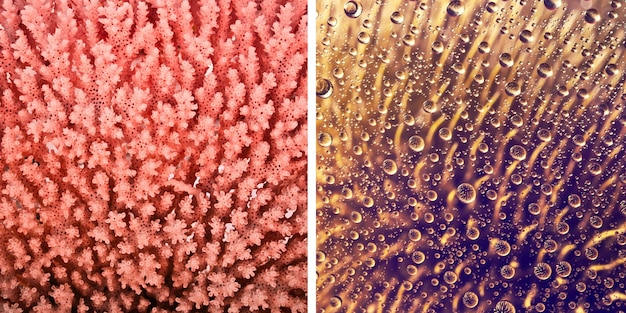How to Choose the Perfect Beard Oil for Your Skin Type in 2025

Choosing the right beard oil in 2025 depends on understanding your skin type (oily, dry, sensitive, or combination) and selecting oil ingredients that address specific needs, such as hydration, irritation relief, or acne prevention.
Navigating the world of beard care can be tricky, especially when it comes to choosing the right products for your unique skin. This comprehensive guide will help you **how to choose the right beard oil for your skin type in 2025**, ensuring a healthy, happy beard and skin.
Understanding Your Skin Type
Before diving into the specifics of beard oils, it’s crucial to understand your skin type. Different skin types react differently to various oils, so knowing yours is the first step towards a healthy beard and skin.
Identifying Oily Skin
Oily skin is characterized by a shiny appearance, enlarged pores, and a tendency to develop acne or blackheads. If your skin feels greasy throughout the day, especially in the T-zone (forehead, nose, and chin), you likely have oily skin.
Recognizing Dry Skin
Dry skin often feels tight, itchy, and can sometimes be flaky. It may also appear dull and be more prone to fine lines. Cold weather and harsh soaps can exacerbate dryness.

Sensitive Skin Characteristics
Sensitive skin is easily irritated by various factors, including fragrances, dyes, and certain ingredients in skincare products. It may react with redness, itching, burning, or stinging sensations.
Combination Skin Explained
Combination skin features a mix of oily and dry areas. Typically, the T-zone is oily, while the cheeks and other areas are dry. This skin type requires a balanced approach to skincare.
- Oily Skin: Shiny, prone to acne, enlarged pores.
- Dry Skin: Tight, itchy, flaky, dull appearance.
- Sensitive Skin: Easily irritated, redness, itching, burning.
- Combination Skin: Oily T-zone, dry cheeks.
Understanding your skin type is the foundation for selecting the correct beard oil. Each type has different needs, and knowing yours ensures you choose oils that will nourish and protect your skin and beard.
Key Ingredients to Look for in 2025
Once you’ve identified your skin type, you can start looking at the ingredients in beard oils. Certain ingredients are better suited for specific skin types and can address common beard and skin issues.
Carrier Oils: The Foundation
Carrier oils make up the bulk of beard oil and provide the base for essential oils. They deliver moisturizing and nourishing properties to the skin and beard.
Essential Oils: The Enhancers
Essential oils are added in small amounts to provide additional benefits and fragrance. They can address specific concerns like inflammation, irritation, and acne.
Beneficial Ingredients for Oily Skin
For oily skin, look for lightweight oils that won’t clog pores. Ingredients like jojoba oil, grapeseed oil, and tea tree oil can help balance oil production and prevent acne.

Hydrating Ingredients for Dry Skin
Dry skin benefits from rich, moisturizing ingredients such as argan oil, coconut oil, and shea butter. These oils help to hydrate the skin and beard, reducing dryness and flakiness.
- Jojoba Oil: Mimics skin’s natural sebum, balancing oil production.
- Argan Oil: Rich in vitamin E and fatty acids for moisturizing.
- Tea Tree Oil: Antibacterial properties, helps prevent acne.
- Coconut Oil: Deeply hydrating, but can be comedogenic for some.
Choosing the right ingredients can make a significant difference in the health and appearance of your beard and skin. By focusing on ingredients that align with your skin type, you can avoid common problems and achieve optimal results.
Beard Oil Selection for Oily Skin
If you have oily skin, the goal is to find a beard oil that provides moisture without adding excess oil. Lightweight, non-comedogenic oils are your best bet.
Ideal Carrier Oils for Oily Skin
Lightweight carrier oils like jojoba, grapeseed, and apricot kernel oil are excellent choices for oily skin. They absorb quickly and won’t leave a greasy residue.
Essential Oils to Control Oil Production
Tea tree, cedarwood, and lemongrass essential oils can help regulate oil production and prevent breakouts. Use these sparingly to avoid irritation.
Application Tips for Oily Skin
When applying beard oil, use a small amount and focus on the beard hair rather than the skin underneath. This will provide moisture where it’s needed without clogging pores.
Oily skin requires careful selection of beard oils to maintain a healthy balance. By choosing the right oils and applying them correctly, you can enjoy a well-groomed beard without exacerbating oiliness or acne.
Beard Oil Selection for Dry Skin
For dry skin, the primary goal is to provide deep hydration and prevent moisture loss. Rich, emollient oils are essential for maintaining a healthy, moisturized beard and skin.
Top Carrier Oils for Dry Skin
Argan, coconut, and shea butter oils are excellent choices for dry skin. These oils are deeply moisturizing and help to create a protective barrier against moisture loss.
Essential Oils for Added Hydration
Sandalwood, lavender, and chamomile essential oils can provide additional hydration and soothing properties. These oils can help to calm irritated, dry skin.
Best Practices for Application on Dry Skin
Apply beard oil after showering when your skin is still slightly damp. This helps to lock in moisture. Use a generous amount and massage it thoroughly into both the beard and the skin underneath.
- Argan Oil: Rich in fatty acids and vitamin E, deeply moisturizing.
- Coconut Oil: Highly emollient, creates a protective barrier.
- Shea Butter Oil: Soothes and hydrates dry, irritated skin.
- Sandalwood Oil: Provides added hydration and a pleasant scent.
Dry skin requires a proactive approach to hydration. By selecting the right beard oils and following proper application techniques, you can combat dryness and maintain a healthy, well-moisturized beard and skin.
Beard Oil Selection for Sensitive Skin
Sensitive skin requires a gentle approach with minimal irritants. Hypoallergenic and fragrance-free beard oils are the safest choices to avoid adverse reactions.
Gentle Carrier Oils for Sensitive Skin
Jojoba, almond, and avocado oils are well-tolerated by most sensitive skin types. These oils are gentle, nourishing, and unlikely to cause irritation.
Essential Oils to Soothe Irritation
Chamomile, calendula, and aloe vera essential oils can help soothe and calm irritated skin. Look for beard oils that contain these ingredients in small amounts.
Patch Testing for Sensitive Skin
Before applying any new beard oil, perform a patch test on a small area of skin to check for any adverse reactions. Wait 24-48 hours to see if any redness, itching, or irritation develops.
Dealing with sensitive skin requires extra care and attention. By choosing gentle, hypoallergenic beard oils and performing patch tests, you can minimize the risk of irritation and maintain a healthy, comfortable beard and skin.
Beard Oil Selection for Combination Skin
Combination skin requires a balanced approach that addresses both oily and dry areas. Look for beard oils that provide hydration without clogging pores.
Balancing Carrier Oils for Combination Skin
A blend of jojoba and argan oils can work well for combination skin. Jojoba helps to balance oil production in the T-zone, while argan provides hydration to drier areas.
Essential Oils for Combination Skin
Lavender, tea tree, and geranium essential oils can help to balance oil production and soothe any dry patches. Use these in moderation to avoid over-drying or irritation.
Strategic Application for Combination Skin
Apply beard oil sparingly to the oily T-zone and more generously to the drier areas. This targeted approach ensures that each area receives the right amount of moisture.
- Jojoba Oil: Balances oil production in the T-zone.
- Argan Oil: Hydrates drier areas without clogging pores.
- Lavender Oil: Soothes and balances overall skin health.
- Tea Tree Oil: Controls oil and prevents breakouts.
Managing combination skin requires a strategic approach. By selecting the right blend of oils and applying them thoughtfully, you can achieve a balanced, healthy beard and skin.
| Key Point | Brief Description |
|---|---|
| ✨ Skin Type | Identify if you’re oily, dry, sensitive, or combination. |
| 🌿 Ingredients | Choose oils like jojoba for oily skin and argan for dry skin. |
| 🧪 Patch Test | Always test new oils on a small skin area first. |
| 💧 Application | Apply oils strategically, less for oily areas, more for dry. |
FAQ
▼
Beard oil is a grooming product designed to moisturize and condition beard hair and the skin underneath. It helps prevent dryness, itching, and beard dandruff, promoting a healthier and more manageable beard.
▼
The frequency of beard oil application depends on your skin type and the climate. Generally, applying beard oil once or twice a day is sufficient. Adjust as needed based on how your skin and beard feel.
▼
While beard oil doesn’t directly stimulate hair growth, it creates a healthier environment for hair to grow by moisturizing the skin and beard. This can indirectly support beard growth and thickness.
▼
Apply a small amount of beard oil to a discreet area of skin, like the inside of your wrist or behind your ear. Wait 24-48 hours and check for any signs of irritation, redness, or itching. If no reaction occurs, the oil is likely safe.
▼
Avoid beard oils containing harsh chemicals, synthetic fragrances, and alcohol, as these can dry out the skin and cause irritation. Opt for natural and organic ingredients whenever possible to minimize potential adverse reactions.
Conclusion
Choosing the right how to choose the right beard oil for your skin type in 2025 involves understanding your skin’s unique needs and carefully selecting ingredients that address those needs. By following this comprehensive guide, you can ensure a healthy, well-groomed beard and happy, comfortable skin.





